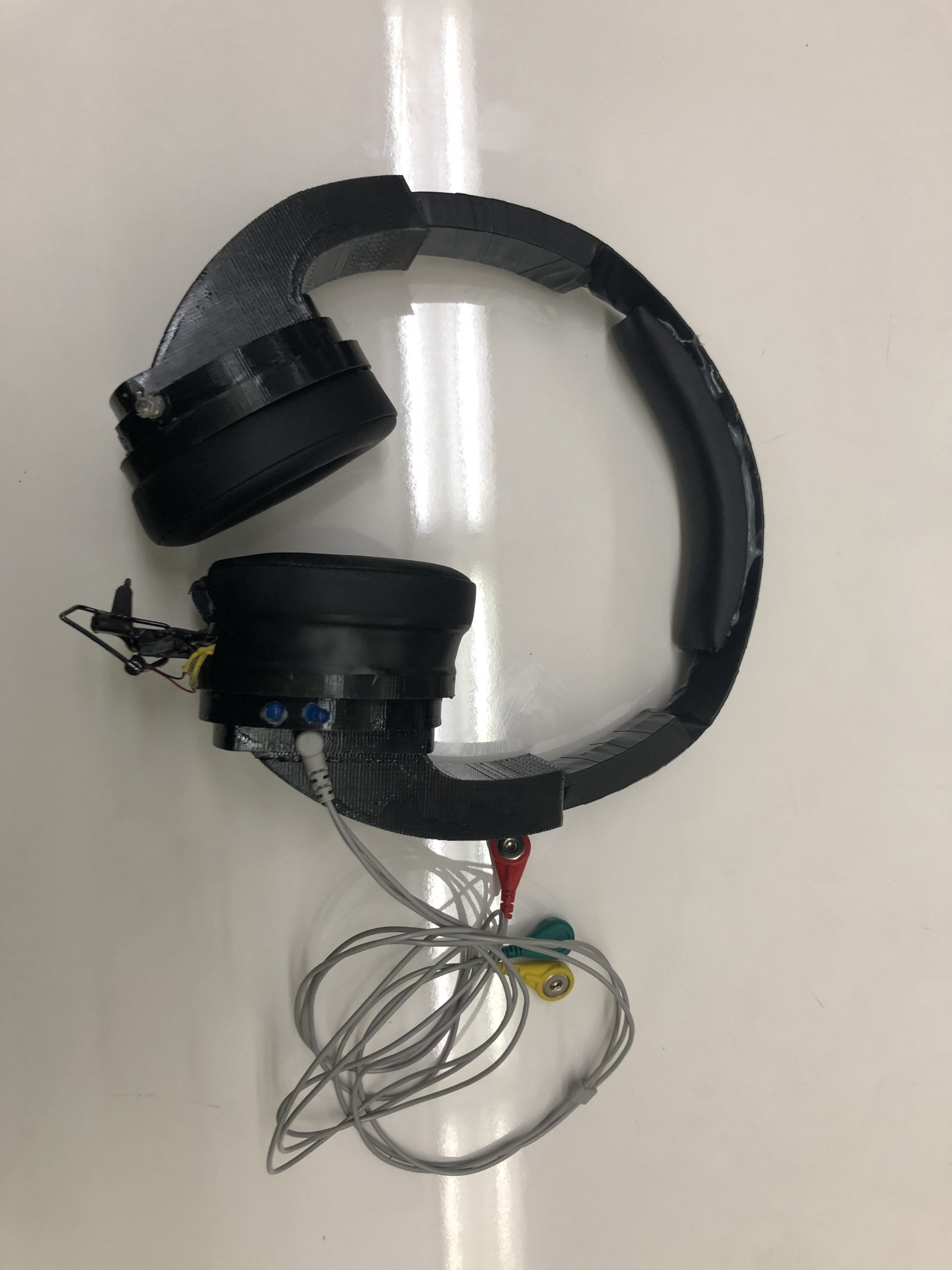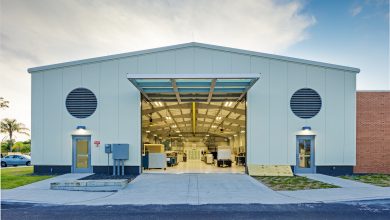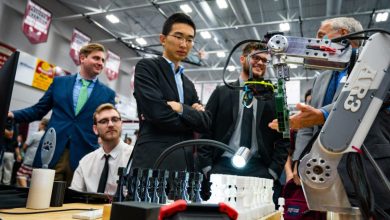Students Create a Rockin’ Heart Monitoring Device
Cardiovascular disease (CVD) is the leading cause of death in the United States with over 84 million people currently suffering from this disease. Research has shown that patients who complete their cardiac rehab program can reduce their risk of mortality by 30%. However, only 20% of CVD patients complete the program due mostly to the inconvenience of going to a cardiac rehab clinic.
A team of biomedical, software and electrical engineering students teamed up to create a device that would allow patients to more conveniently complete their rehab in an effort to help combat CVD mortality. Enter HeartPhones.
Biomedical engineering majors Kayla Hergott, Lucia Lopez, Stefano Verratti, software engineering major Connor DuBois and electrical engineer Aria Canadell combined their expertise to create a pair of functional, 3D printed headphones that takes a patient’s ECG, pulse, O2 saturation, and blood pressure. All of the patient’s vital signals are then sent to both a patient and a doctor application. Through the app, patients can monitor their progress over time as well as access CVD educational tools and the physician can remotely monitor patients in real time.
Team leader, Kayla Hergott’s parents were part of the inspiration behind HeartPHones.
“Both of my parents work in the health care industry and my mother is constantly working with patients who suffer from CVD, but do not complete their cardiac rehab, despite its obvious benefits. She requested one, all-inclusive device that was intuitive and accurate and would allow patients to complete their rehab from home,” said Hergott.
The team wanted to deliver a device that would be all inclusive, taking multiple vital signs and the only way to currently measure blood pressure is with a cuff.
“When we started our project, there was not a device on the market that could take blood pressure without using a cuff. Therefore, extensive research was required, and I was very surprised that we were able to take accurate blood pressure readings without a cuff,” said Hergott.
And the team took an inclusive device to the next level. By choosing headphones, they were able to increase the likelihood of patient adoption since it is a device the patient would most likely already be wearing during their exercise program, listening to music or even taking phone calls are available with all-in-one device.
“There is not a device that incorporates all those signals, ECG, O2 saturation, pulse and blood pressure, into one device on the market. Not only were we able to do that, but we were also able to calculate blood pressure without a cuff.” said Hergott.
The data is put into a customized patient application where the patient monitor their progress and that same data is then uploaded into a doctor application in real-time. If the doctor identifies any anomalies or concerning vital signs, they are able to call the patient, which can be picked up on the headphones.
Because there were so many aspects of the device beyond biomedical engineering, the team found value in combining the skills of software and electrical engineering.
Through the process, Lopez learned how to use Creo and was able to design and 3D print the device. DuBois and Canadell learned how to code different sensors and connect hardware to software via Bluetooth.
“The main takeaway that I learned was how to manage a cross-functional team from an idea to working prototype. I learned how to make decisions quickly based off their value, how to successfully motivate my team members, how to develop a schedule, budget, and how to coordinate the schedule and ideas of four very brilliant engineers with different priorities and goals,” said Hergott.
 The high level of collaboration and the passion the students channeled into creating a viable device for CVD patients was recognized at the 2018 Northrop Grumman Engineering and Science Student Design Showcase. HeartPhones won the 2018 Design and Innovation Award. The team also received interest in patenting their blood pressure algorithm.
The high level of collaboration and the passion the students channeled into creating a viable device for CVD patients was recognized at the 2018 Northrop Grumman Engineering and Science Student Design Showcase. HeartPhones won the 2018 Design and Innovation Award. The team also received interest in patenting their blood pressure algorithm.
“Senior design is the most useful class that an engineering student could take,” said Hergott.





